|

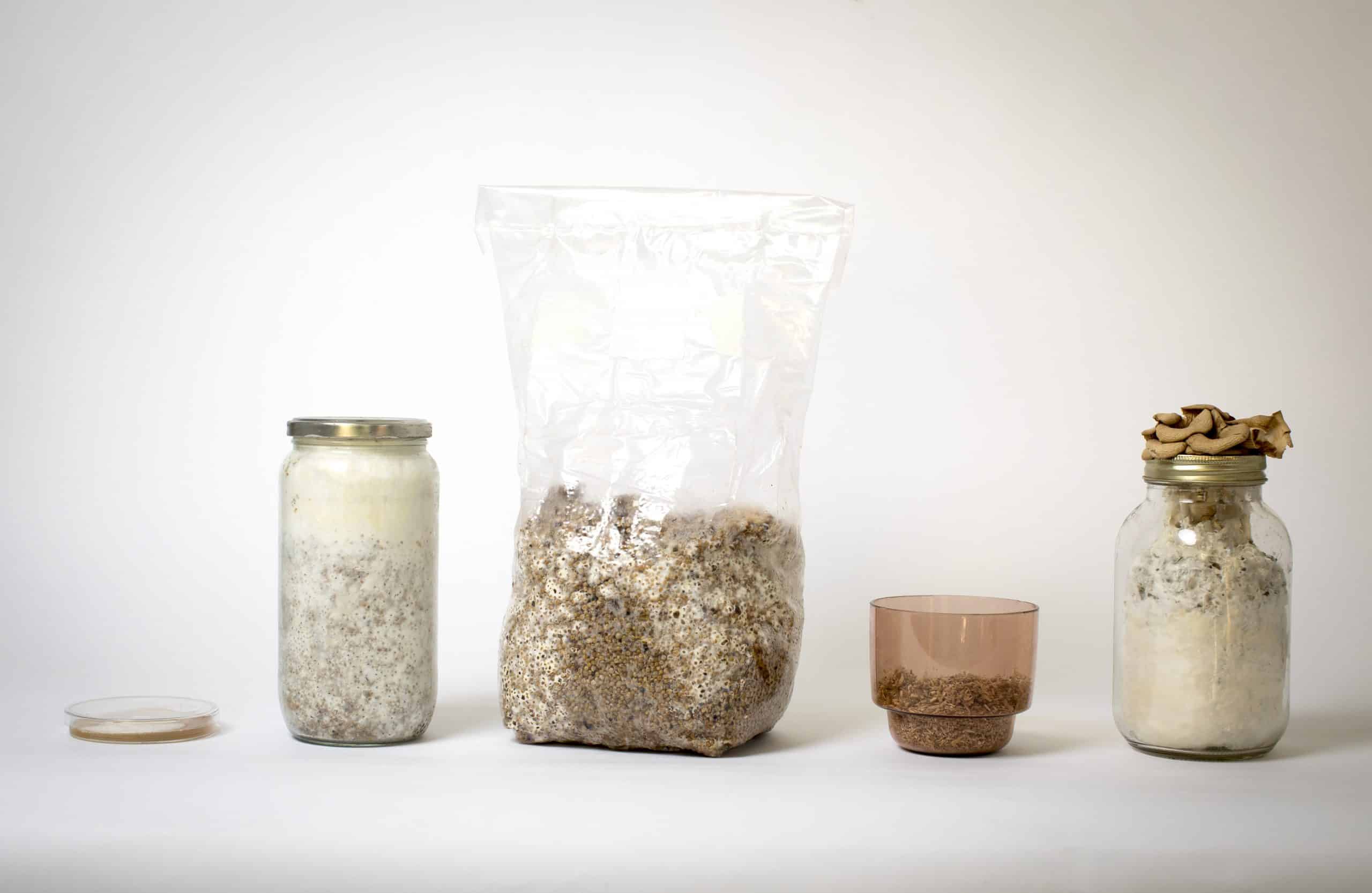
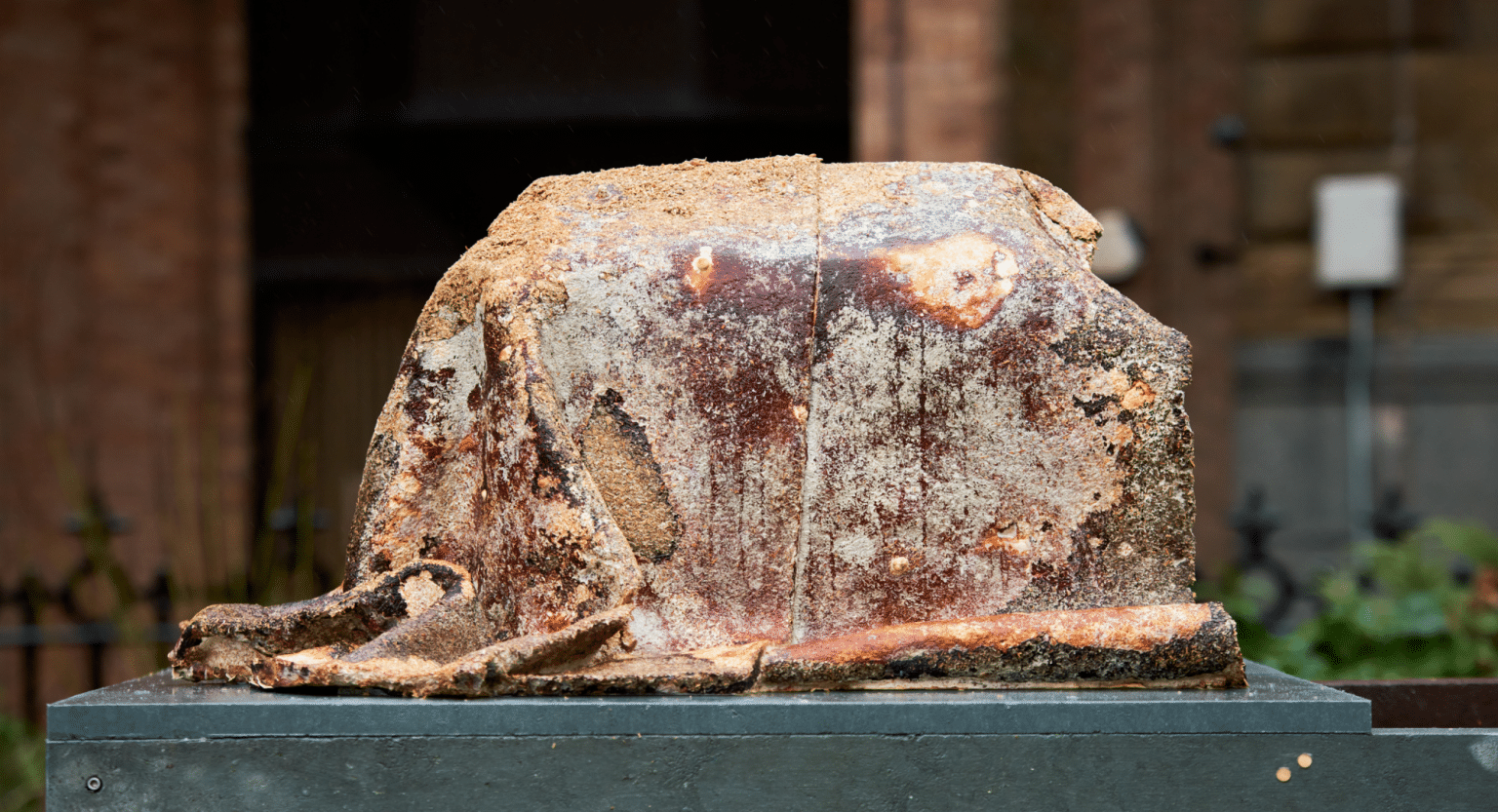
Over the past few years, the notion of sustainable art has grown considerably, making a number of efforts to increase the awareness of key issues regarding the social and environmental impact. Contemporary sculpture is quickly becoming a part of these efforts, with ‘Camp, Do We Go Around the Houses, or Do Houses Go Around Us?’ returning us to a focus on material and why it matters. Three models of shelter-like forms, each expertly crafted from natural materials, operate as sculptural works as well as material investigations. Drawing on a number of different technical approaches from stone carving, to mycelium cultivation, to digital modelling, this installation harnesses the power of nature, bringing together traditional practices with cutting-edge techniques to examine sculpture as a space of possibility and transformation.
For this installation, Pangaea worked with our client to produce a series of sculptures of shelters made from mycelium, reclaimed Portland stone and cob. This offered an innovative way to bring together concerns around sustainable development through the material explorations and platform of contemporary sculpture.
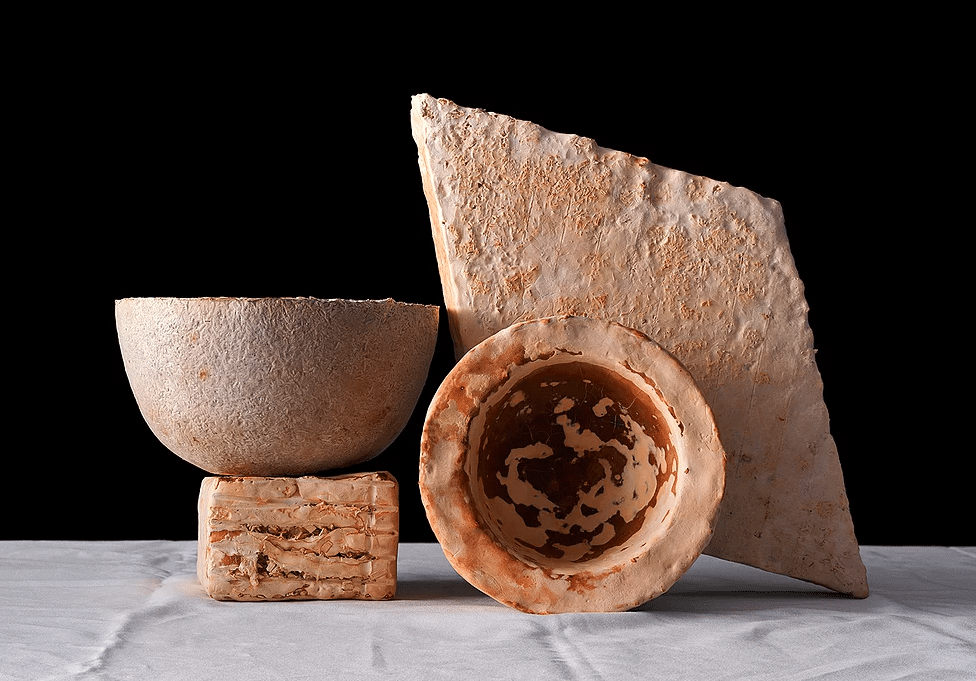
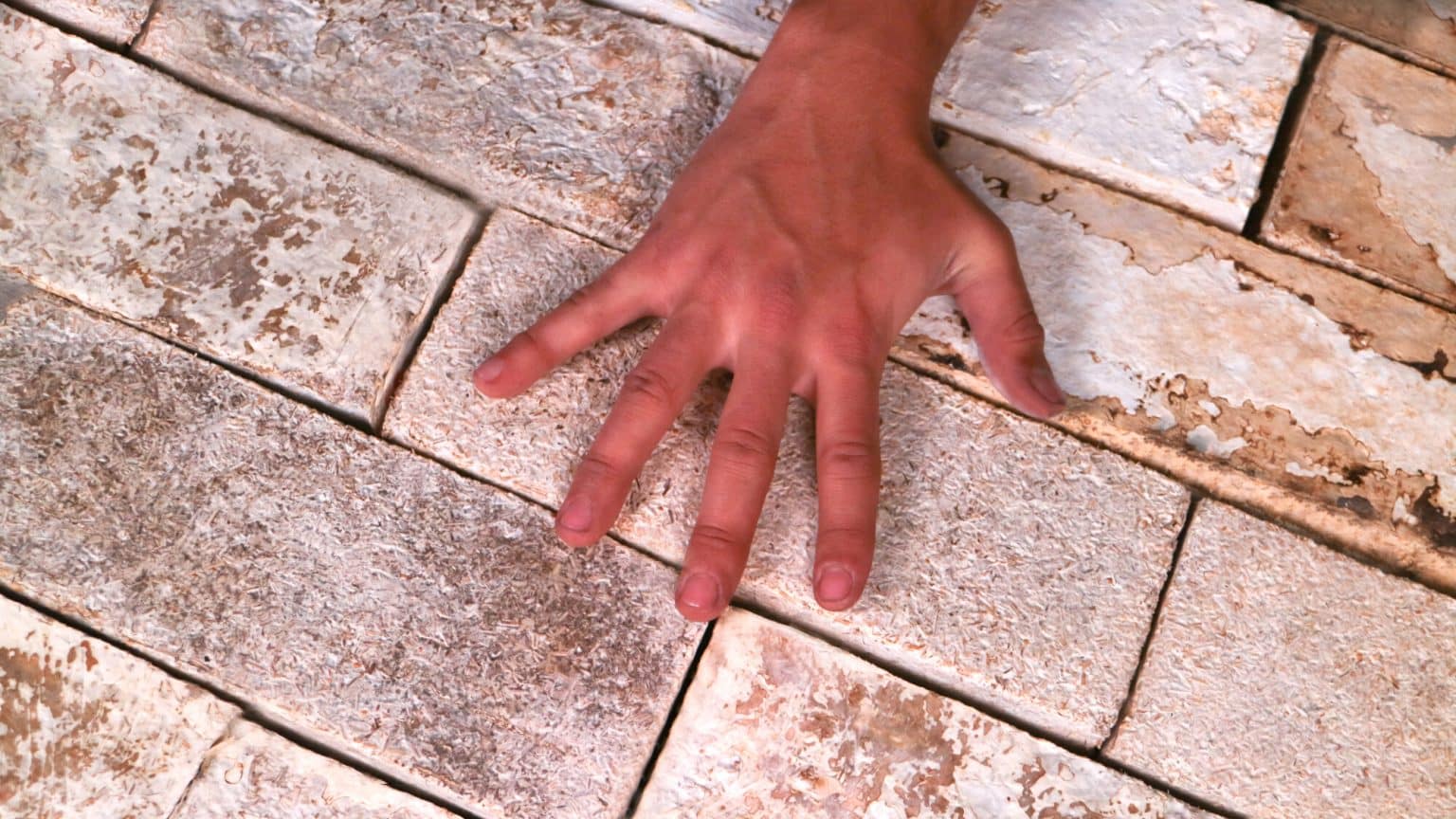
Mycelium is the vegetative root structure of fungus and it offers near limitless opportunities for the development of biobased materials for application in numerous industries. Mycelium biobased materials are renewable, regenerative, can be made to be either strong or flexible and are naturally hydrophobic. Its unique properties present tremendous potential for the material’s application. Experimental projects and material developments can be found across architecture, fashion and design and this material is now finding its way into the world of sculpture. It’s application for a structure of the size and complexity of this artwork, in a single unit, was untested and provided an opportunity for increased material understanding as well as the creation of a unique artwork.
Produced in collaboration with the mycologists at Biohm, hemp shiv was impregnated with mycelium spores which were packed into a mould and left to cultivate in a controlled, sterile environment. Once this process was complete, the moisture was removed in a dehydrator, rendering the mycelium inert.
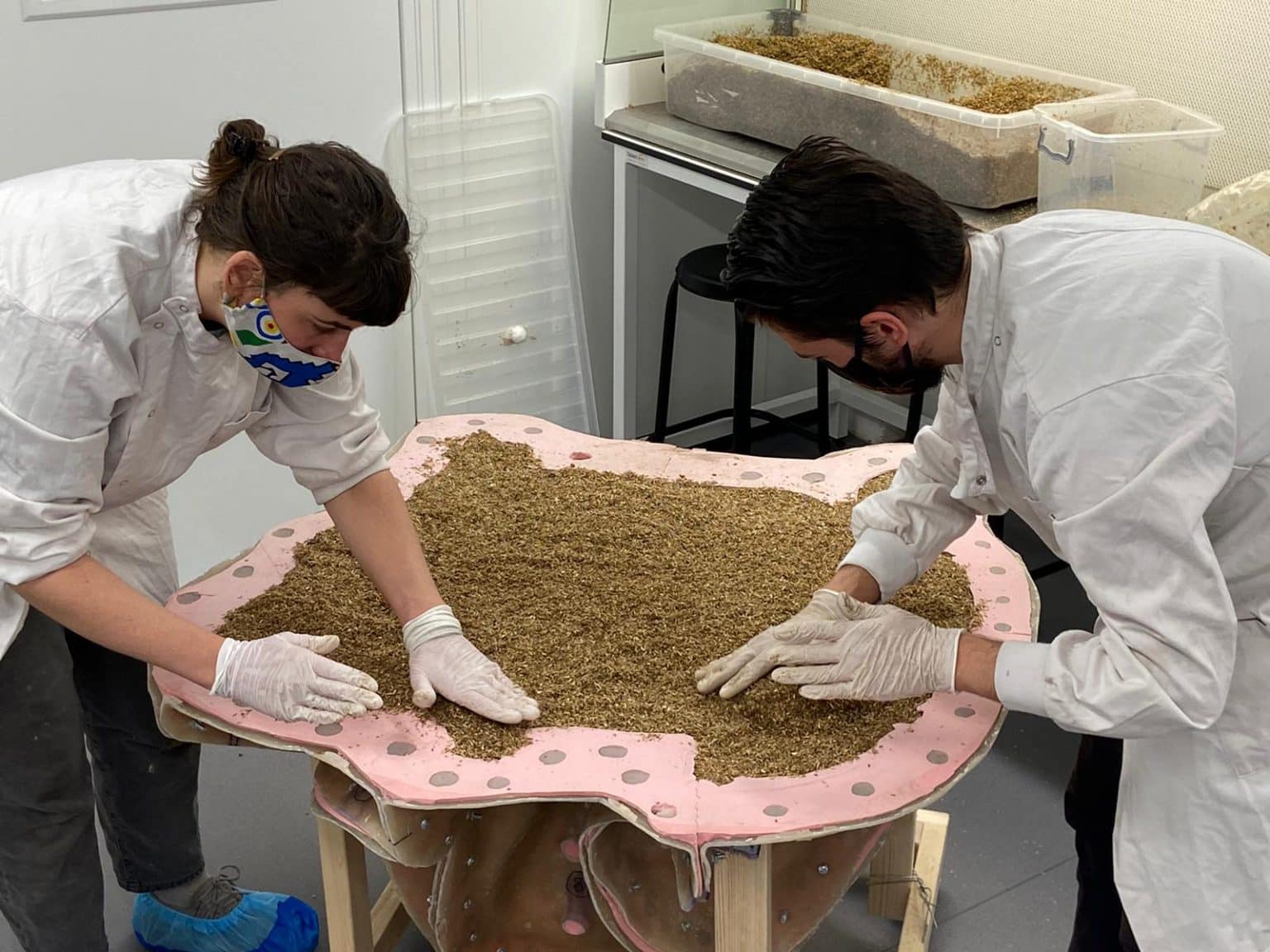
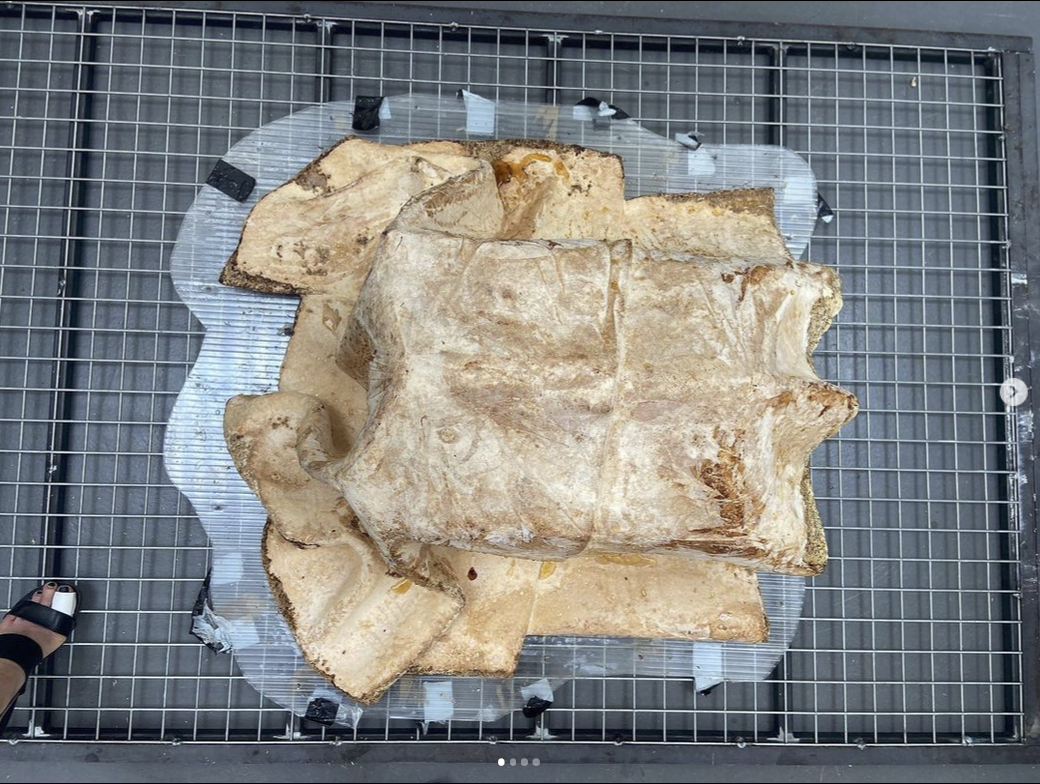
Before the moisture is extracted, mycelium is susceptible to touch. Artist Lucy Tomlins marks the surface of the sculpture with her touch before the moisture is removed, rendering the material inert.